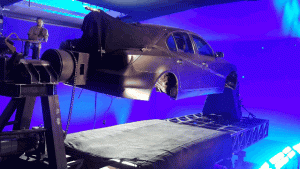Georges Méliès and other visionary pioneers of early special effects started a long and unstoppable evolution that led to the current generation of cinematic technology.

image source: https://en.wikipedia.org/wiki/Special_effect#/media/File:Bluebox_im_Heureka_01.jpg

image source: https://commons.wikimedia.org/wiki/File:Rig_%26_Gimbal_Mechanical_Special_Effects.gif
Even if Auguste and Louis Lumière are considered as the creators of cinematography, the huge contribute given by Georges Méliès can’t be denied: while the Lumière brothers never believed in cinema’s future, he saw its potential and, from 1895 to 1914, directed more than 4000 films.
Melies experiments
He claims to have discovered stop motion while he was filming a street scene, discovering that cameras could manipulate images when he developed the footage he took after his camera jammed filming a basic street scene.
This example reportedly inspired many of his cinematic effects, including:
- transformations (umbrellas turning into mushrooms);
- disappearances (aliens turning into a puff of smoke);
- pixilation (objects appearing to move on their own);
- He even added color to many of his films, hand painting each frame.

image source: https://en.wikipedia.org/wiki/File:Le_Voyage_dans_la_lune.jpg
Inspired by his works, during the 1890s many film production companies were established all over the world. Special effects and film continuity were introduced, involving action moving from one sequence into another, began to be used.
New film techniques were introduced in this period including the use of artificial lighting, fire effects, and low-key lighting (i.e. lighting in which most of the frame is dark) for enhanced atmosphere during sinister scenes.
As films grew longer, specialist writers were employed to simplify more complex stories derived from novels or plays into a form that could be contained on one reel and be easier to be understood by the audience, which made cinema more and more popular.

Info source: https://www.britannica.com/art/special-effects
